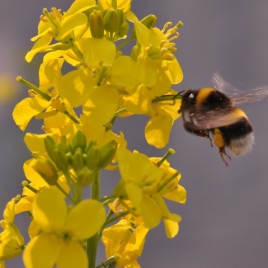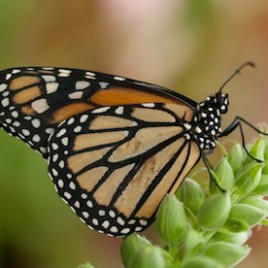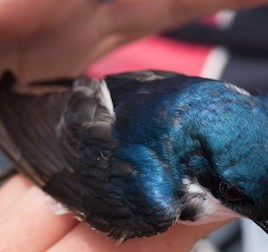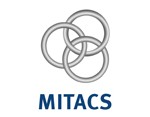JAMA Pediatrics Published October 30, 2018 11:00 EDT (News release from JAMA) Using U.S. highway traffic safety data from 1975 to 2016, researchers compared how many pedestrians died in traffic-related accidents the evening of October 31 each year to similar deaths one week earlier and one week later. Six hundred and eight pedestrians died on the 42 Halloween […]
SMCC Heads Up | October 30, 2018
Halloween fatalities | Home toxins | Fish peer pressure | SMCC Heads Up – Embargoed and recently published research with a Canadian focus, curated by SMCC for science journalists. Read more>
Higher levels of previously unsuspected pollutant found in homes, environment
Environmental Science & Technology Published October 30, 2018 01:00 EDT (News release from Indiana University) Scientists found high levels of a previously unsuspected pollutant in homes and in an electronic waste recycling facility in Ontario, and in southwestern Lake Michigan. The chemical, tri(2,4-di-t-butylphenyl) phosphate or TDTBPP, is an organophosphate known to be toxic. People are likely exposed to […]
New tool measures birds’ complex flight dynamics
Published October 24, 2018 17:01 EDT (Brief from Royal Society) A portable stereo-imaging system and algorithms allowed researchers to measure three-dimensional flight trajectories and time-resolved wingbeat frequencies of freely flying birds. When applied to jackdaws and rooks flying alone and in large flocks, the resulting data suggest that flocking, unlike V-formation flight, is energetically costly. Canadian […]
Decadal weather system-driven rainfall amplifies owl predation on rare seabirds
Proceedings of the Royal Society B: Biological Sciences Published October 24, 2018 17:01 EDT (Brief from Royal Society) The effects of drought-breaking rainfall driven by El Ninõ/Southern Oscillation (ENSO) ricochets along a chain of interactions between marine and terrestrial food webs, leading to enhanced predation of a rare nocturnal seabird by a population of barn owls […]
Modern and ancient arthropods share shell-crushing abilities
Proceedings of the Royal Society B: Biological Sciences Published October 24, 2018 17:01 EDT (Brief from Royal Society) This first analysis of the feeding biomechanics of modern and extinct shell-crushing arthropods shows remarkable similarities between the feeding structures of the modern American horseshoe crab and the 508-million-year-old Sidneyia inexpectans from British Columbia’s Burgess Shale. This biomechanical […]
Glass sponge persistence under climate change
PLOS One Published October 24, 2018 14:00 EDT (News release from PLOS) The unique glass sponge Vazella pourtalesi off Nova Scotia, is distributed in an area that experiences strong historical variability in temperature and salinity. The persistence of this species in the face of this climatic variability possibly indicates how it will response to future climate […]
Navigating the moral rules of the road for a future of driverless cars
Nature Published October 24, 2018 13:00 EDT (News release from Nature Research Press) Results from a worldwide online survey reveal global moral preferences for how driverless cars should decide who to spare in unavoidable accidents. Many shared preferences exist, including sparing the largest number of lives, prioritizing the young, and valuing humans over animals, while ethics […]
How Salmonella tricks the human immune system
Cell Reports Published October 23, 2018 11:00 EDT (News release from McMaster University) By comparing two Salmonella strains – one that causes disease in humans and the other in reptiles – researchers discovered another method bacteria use to evade the human immune system and promote infection. Although the two bacteria share most of their genes, researchers found […]
SMCC Heads Up | October 23, 2018 
Moral machines | El Niño–owl predation | Salmonella tricks | SMCC Heads Up – Embargoed and recently published research with a Canadian focus, curated by SMCC for science journalists. Read more>

Climate change may worsen bumblebee decline
Nature Scientific Reports Published October 18, 2018 09:00 EDT (News release from Nature Research Press) Researchers used previous patterns of bumblebee range changes and bumblebee queen dispersal rates to model potential changes in their ranges under different future climate scenarios. All results suggest that bumblebee species will significantly decline further across much of North America, with […]
Urban rats eat more protein
Proceedings of the Royal Society B: Biological Sciences Published October 17, 2018 17:01 EDT (Brief from the Royal Society) Rats are one of the most successful and prolific pests in human society, yet rat behaviour in cities remains poorly understood. Analysis of diets of 19th-century rats from Toronto show that rats in cities have significantly different […]

Wing veins help butterflies’ hearing
Biology Letters published October 17, 2018 17:01 EDT (Brief from the Royal Society) A distinguishing feature of a diverse group of butterflies called the Satyrini is a conspicuous swelling on their forewings. Using the Common Wood-Nymph as a representative Satyrini, researchers reveal that these butterflies have ears on their forewings that are sensitive to low-frequency sounds. The […]

Long-term data probe tree swallow declines 
The Condor: Ornithological Applications: two papers Published October 17, 2018 09:00 EDT (News release from the American Ornithological Society) Long-term Canadian data reveal how demographic factors contribute to declining populations of tree swallows, which hunt insects while flying. In Ontario, drops in overwinter survival and the rate at which chicks successfully left the nest drove the […]
Le cannabis sous l’angle de la science et des effets sur la santé 
LE CANNABIS SERA LÉGAL AU CANADA À COMPTER DU 17 OCTOBRE 2018. À la suite de ce changement, les adultes pourront cultiver (dans la plupart des provinces), acheter et posséder de petites quantités de cannabis à usage récréatif et les partager avec d’autres adultes. Le gouvernement fédéral a fixé à 18 ans l’âge minimal pour […]
BACKGROUNDER: Health Effects And Science Of Cannabis 
As of today, possession of cannabis is legal in Canada for the first time since 1923. But there remain major gaps and a lack of consensus around what we actually know in several key areas. The science is far from settled when it comes to cannabis use and its implications for personal health and public […]
